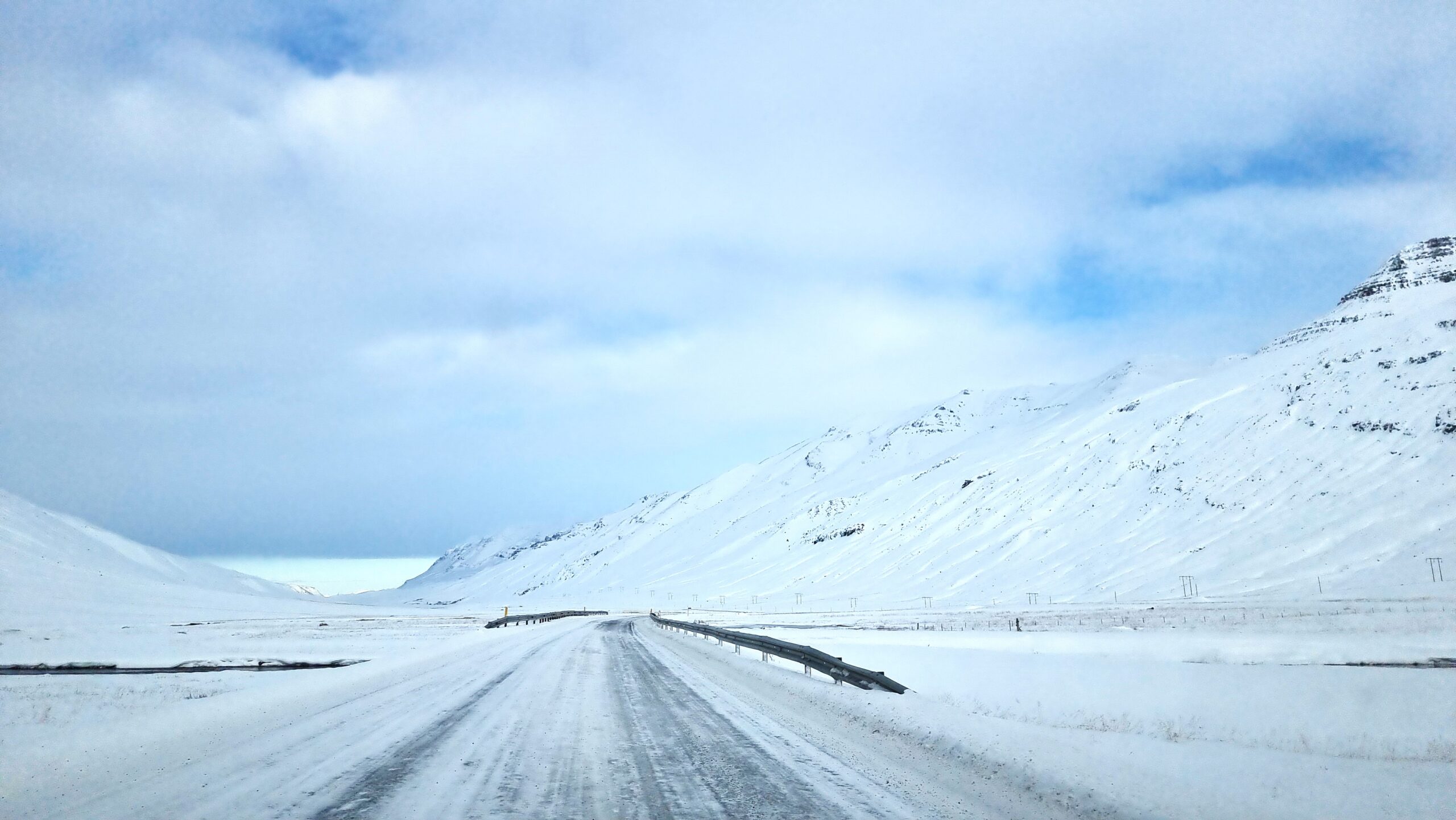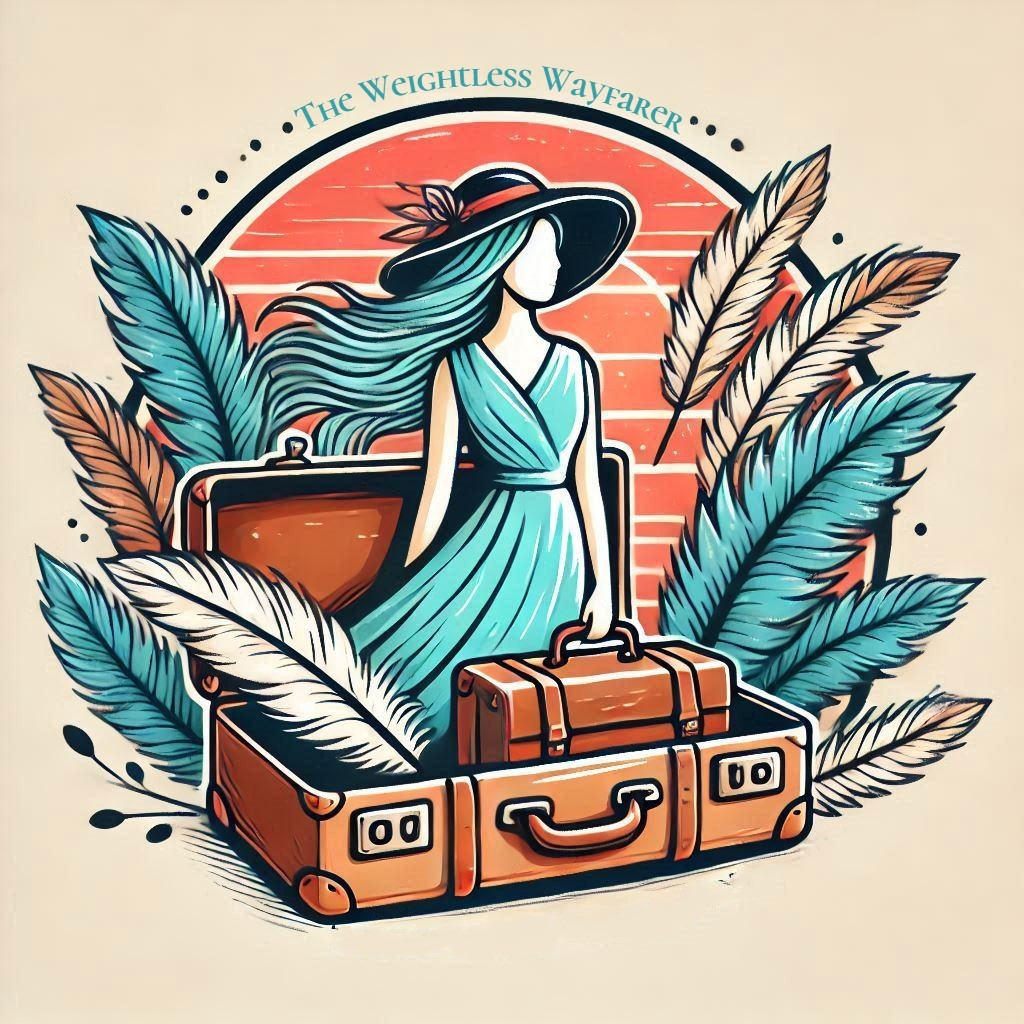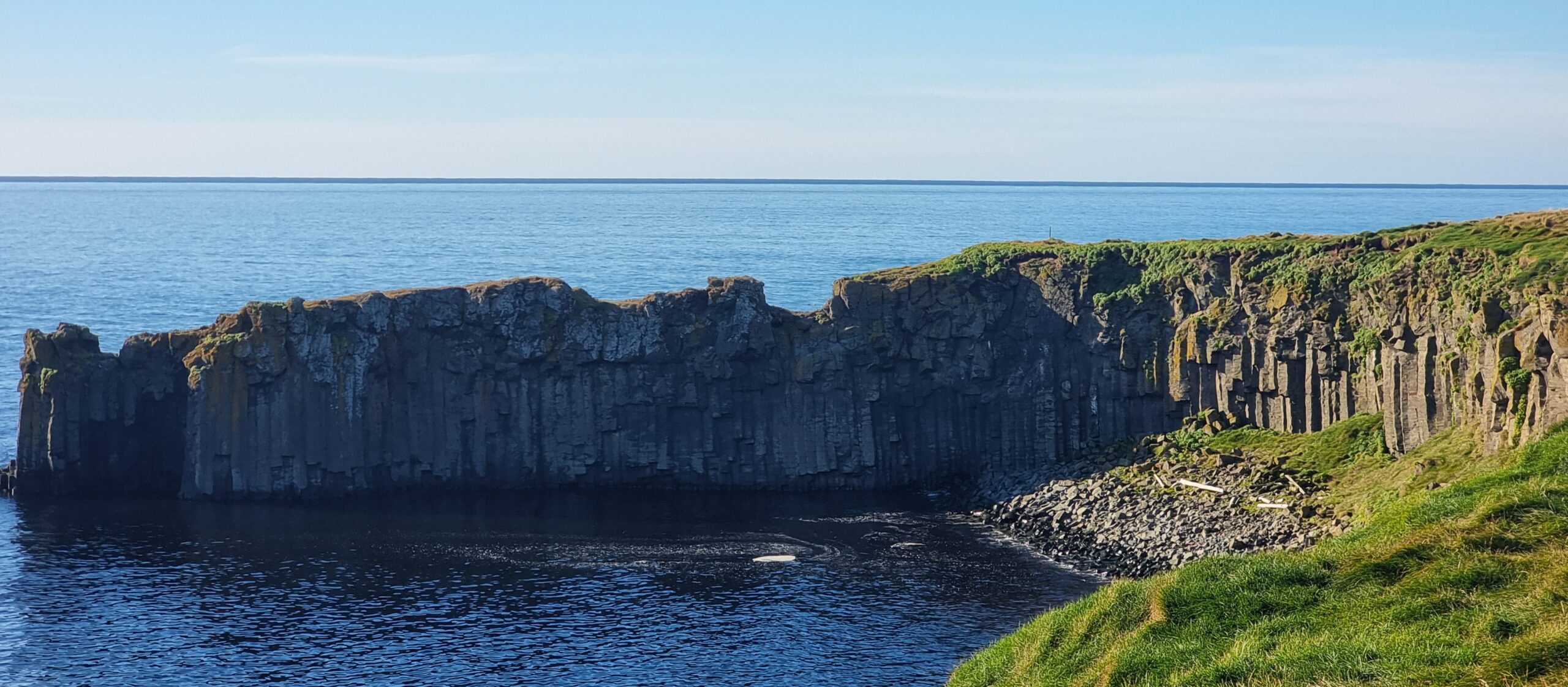Iceland is my favourite place to travel to. It is an increadible country that keeps on surprising, and not two trips are alike.
It is full of adventure, unpredictable and outworldly. But a trip to Iceland can easily turn into a nightmare if you go there unprepared. So here’s a quick guide from trip prepping, to satnavs, to food & drinks, and more.
What clothes to pack
Iceland being so unpredictable, you’ll probably end up bringing all 4-season clothes with you, so you have read it before, it’s all about the layers. But depending on whether you’re going in their summer or winter you might want to prioritize specific clothes. After 4 trips I think I got my suitcase Iceland-proof.
WINTER
Iceland lies just south of the Arctic circle, however temperatures stay relatively mild in the winter, averaging around the 0 degree Celsius, give or take a couple. Unfortunately, winter is long. It starts in October and ends in May so most likely you will end up visiting Iceland in the winter, especially if you’re planning on seeing the Northern Lights. My favourite month to visit is September, when the crowds get smaller, weather is very wet but not too cold, and if you’re lucky with the weather you may see the Northern lights. So here’s what to bring:
- 1 thermal long sleeve underlayer
- 1 thermal or fleece long pants to wear under your hiking trousers
- 1 non thermal underlayer
- 2 short sleeve t-shirts
- 2 fleece tops
- 1 light hoodie
- 1 Hiking trousers, or trousers that can dry quickly (I like Craghoppers Kiwi Pro Eco Stretch, they fit me like a glove!)
- Waterproof jacket (I use OEX Fortitude II)
- Waterproof overtrousers (I have the Regatta Pack it, they take no space in your luggage)
- Waterproof hiking boots
- Wool socks and hiking socks
- Hat, gloves, and scarf
- Swimsuit
- Some clothes and shoes to wear in town/for going out, like jeans, wolly jumpers or warm(ish)dress
From October to April, just replace short sleves with another thermal underlayer and one more fleece jumper or warm hoodie. I personally also prefer bringing a waterproof bomber jacket, as the wind is unforgiving and those light waterproof jackets won’t be of much use!
SUMMER
Summers are not very long, and temperatures still won’t really go beyond 15 Celsius so there’s no use bringing summer clothes and sandals… treat the summer more like a spring kind of weather. But days are long and you’ll be able to enjoy the midnight sun if you travel in June. The list is very similar to winter, but without the thermals:
- 2 long sleeve t-shirts
- 2 short sleeve t-shirts
- 1 zip-up hoodie or warm jacket
- 1 or 2 light hoodies
- 1 Hiking trousers (same reliable Craghoppers)
- Waterproof jacket (I use OEX Fortitude II)
- Waterproof overtrousers (it rains a lot, but also useful if you want to venture behind waterfalls)
- Waterproof hiking boots
- Hiking socks
- Swimsuit
- Some clothes and shoes to wear in town/for going out, like jeans, jumpers or dress
Other useful things to pack
Food. Iceland doesn’t have much in terms of local produce, so groceries can be expensive. And eating out is even more expensive, so personally I try to limit that as much as possible when we go there. If you’re also gluten intolerant or coeliac you will have an even harder time, so make sure to pack your favourite gluten free bread, and especially your choice of breakfast (I like to prep some gluten free dry pancake mix in ziplock bags). There isn’t much in terms of gluten free bakery, but you’ll be able to find some essential goods like oats, rice cakes and bread (at extortionate prices!!) in some supermarkets.
If you do have space in your luggage and you’re staying in a place with a kitchen, I always find it useful to bring some tinned tuna and basic cooking ingredients with me (like my special spice and herbs mix, and spray oil just in case).
Car phone holder. You will be doing lots of driving, and you should never, and I repeat Never rely on the stock sat-nav. It will lead you to the most improbable roads. Always check the road conditions first, and follow Google maps. Little tip, if you can attach it on the console you can take some pretty cool pics while driving.
Water bottle. Tap water in Iceland is tasty! Make sure to fill up you refillable bottle as much as you can, you’ll miss it when you leave.
Microfiber towel. Whether you try and bathe in one of the many natural hot springs or visit any Icelandic spa, this portable towel is a life saver. Fits in your backpack, dries quickly and you’ll avoid paying to hire a towel at the spa.
Car rental & Icelandic roads
To fully enjoy the beauty of Iceland I always recommend to plan for a road trip and rent a car.
Iceland didn’t get their first paved road until the 1960s, and to this day many roads are still gravel, others (mostly in the mountains) don’t even have bridges over river crossing and require fording. So the choice of cars really depends on what you plan on doing while there. Personally I still haven’t ventured in the highlands, but it surely is on my list. Another factor to consider is the time of year. Roads can get very icy and some roads, even to major attractions, can get difficult to drive on as early as October.
From my experience so far, if you’re planning to go between May and September, a 2WD will be enough. However, it is illegal to drive a 2WD on F-roads (mountain roads), so make sure to check your routes before driving to a location. Sometimes these may seem like the shortest routes on maps, but they are incredibly horrible to drive on, as they receive very little maintenance.
The rest of the year it is always better to rent a 4WD, not just for safety and comfort, but also because it will allow you to reach any destination without worrying about getting stuck in snow (even in October).
Iceland is so used to tourists hiring cars that you have an extremely wide choice. There are 3 desks inside the airport (Budget/Avis, Europcar and Hertz) and a few more car rental places outside, to which you can either walk 5/10 minutes or wait for the shuttle bus which runs every 15/20 minutes (only until 6pm).
An important piece of advice is to always check the status of roads, and it’s very easy now that they have updated the website. By going on road.is you’ll be able to see if a road is closed, impassable, icy or snowed over. It is quite literally a life saver, and a must in the winter.

Another piece of advice is not to underestimate the value of “Gravel protection insurance”. It doesn’t matter if you’re only driving on paved roads, Icelandic roads use asphalt, and you easily get stones flying at your car (or on the windscreen, creating a very visible dent!) from the car in front of you. What’s more, not all the ring road is paved, so you may end up on gravel anyway! So if you’re planning on driving further than Reykjavík and the golden circle, I would advice to add it to your insurance.
All that being said, you don’t have to hire a car if you plan on only visiting a smaller area. There are multiple day trips departing from Reykjavík to any major attraction and many more experiences that have a pick-up service for an extra fee. Or you could rent a car just for the day if you want to live the experience of driving the “golden circle”, which is an easy drive from Reykjavík.
Accommodation
You really are spoiled for choice in Iceland, and it really depends on your preference. There’s many campsites and resting areas if you prefer camping or travel via campervan, innumerable airbnbs if you prefer having your privacy, and plenty of guesthouses where you can meet the locals and other travellers, all located in and around major towns and some attractions.
I personally prefer a mix of airbnbs and guesthouses, mostly depending on where I’m staying. If I can, I always try to find stays on farms or in remote areas, so I can hope to see the Northern Lights from the comfort of my accommodation!
In terms of where to look, airbnb seems to be the most widely used service in Iceland. However, if you end up going in more remote places, like the Westfjords and the area around Jökulsárlón you’ll have to book early, as there aren’t as many options. For these areas, it’s also worth looking on booking.com for guesthouses or more conventional B&Bs. I won’t be listing all the places I’ve been that are worth staying at, but I’ll reserve that for future posts on the specific areas.
Cooking and food shopping
If you’re like me, and you probably are if you’re gluten intolerant, then this is a very important topic. When booking accommodation, I always make sure to check if there is a kitchen for guests and what appliances are available. I once stayed in a guesthouse that claimed to have a kitchen, but all it had was a portable hob to share among 5 rooms. But the guesthouse had a roof hot tub in the centre of Reykjavík, so all was forgiven!
Once you know what your cooking arrangements are, it’s time to figure out what you need to bring from home, and what to buy once there. Usually, airbnbs and guesthouse kitchens are very well stocked with coffee and basic cooking ingredients (salt, pepper, oil, herbs and spices), so I just bring some of my special spice mix. My partner is way more organized in that, and he always also packs bell peppers, a couple carrots, onion and garlic (and a few cans of beer seeing how expensive and difficult to get alcohol is).
Gluten free
Iceland is not very gluten free friendly when it comes to breakfasts and food shopping. In general, I always bring breakfasts from home when I travel, just in case I can’t find anything I fancy. My glutenfree packing list always features:
Gluten free bread and pasta. Medium range supermarkets will have some basic Schar products and Italian pasta brands.
My own gluten free pancake mix. I combine all ingredients in individual ziplock bags, and just add egg and milk/water when cooking.
Gluten free granola. Iceland has some great tasting yoghurts, so if you like that type of breakfast granola is a must!
Oat cakes and oat biscuits. Just in case I feel like a snack.
SUPERMARKETS
Like in the UK, there’s various ranges of supermarkets, so where you shop depends on what you need and what your budget is. Also pay attention to opening times; most supermarkets open late and close around 8 or 9pm, while others, usually corner shops, are open late or 24h. So here’s the breakdown of the most common supermarkets, in order from the cheapest to the most expensive:
Bónus. This is the most affordable chain in Iceland, and the most easily recognizable with its pink piggy logo. Range of products is not great, but you can find most essential items.
Krónan. This is also a very affordable supermarket and my personal choice. It has a good balance of affoerdable prices and range and you can find gluten ffree products in the bigger stores.
Nettó. Still in the affordable range, with the added benefit that some stores are 24/7. It also have some useful household items if needed.
10/11. Only good in remote areas if you have no other option. These stores are opn 10am/11pm and you’ll find that shopping here will add about 50% extra to the final price.
BEER, WINE AND SPIRITS
Alcohol is solely sold in specialised shops called Vínbúðin (literally “the wine shop”) and it is expensive. What’s more, these shops are usually found at the edge of towns and have ludicrous hours.
It might be hard to believe, but Iceland enforced proibition laws for 75 years, with beer being illegal until 1989. To this day, people in Reykjavík still celebrate bjórdagurinn (beer day) on March 1st.
So for all your boozy needs, it is a lot better to buy beers and wine or anything alcoholic first thing off the plane. The duty free in Keflavík International is very well stocked (it has an especially good selection of wines), and it’s the cheapest place to buy your alcohol. It is also a great place to just browse while you wait for your luggage.
I wish I had known all this before my first trip to Iceland, so I hope you’ll find this guide useful. Leave a comment or contact me if you would like more tips, or if you think I’ve missed some information!

